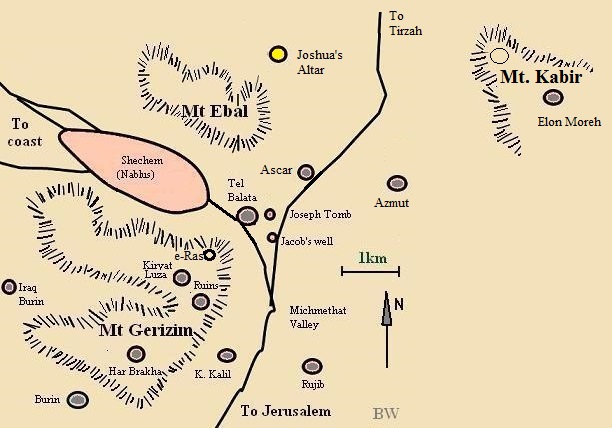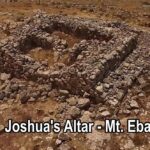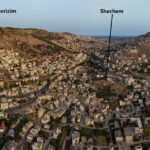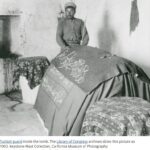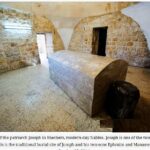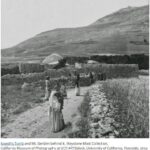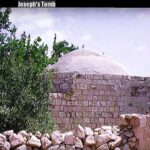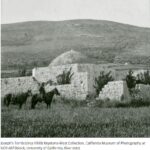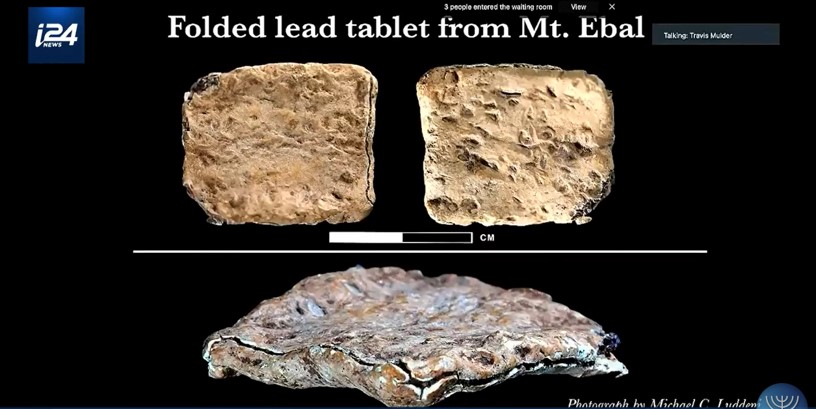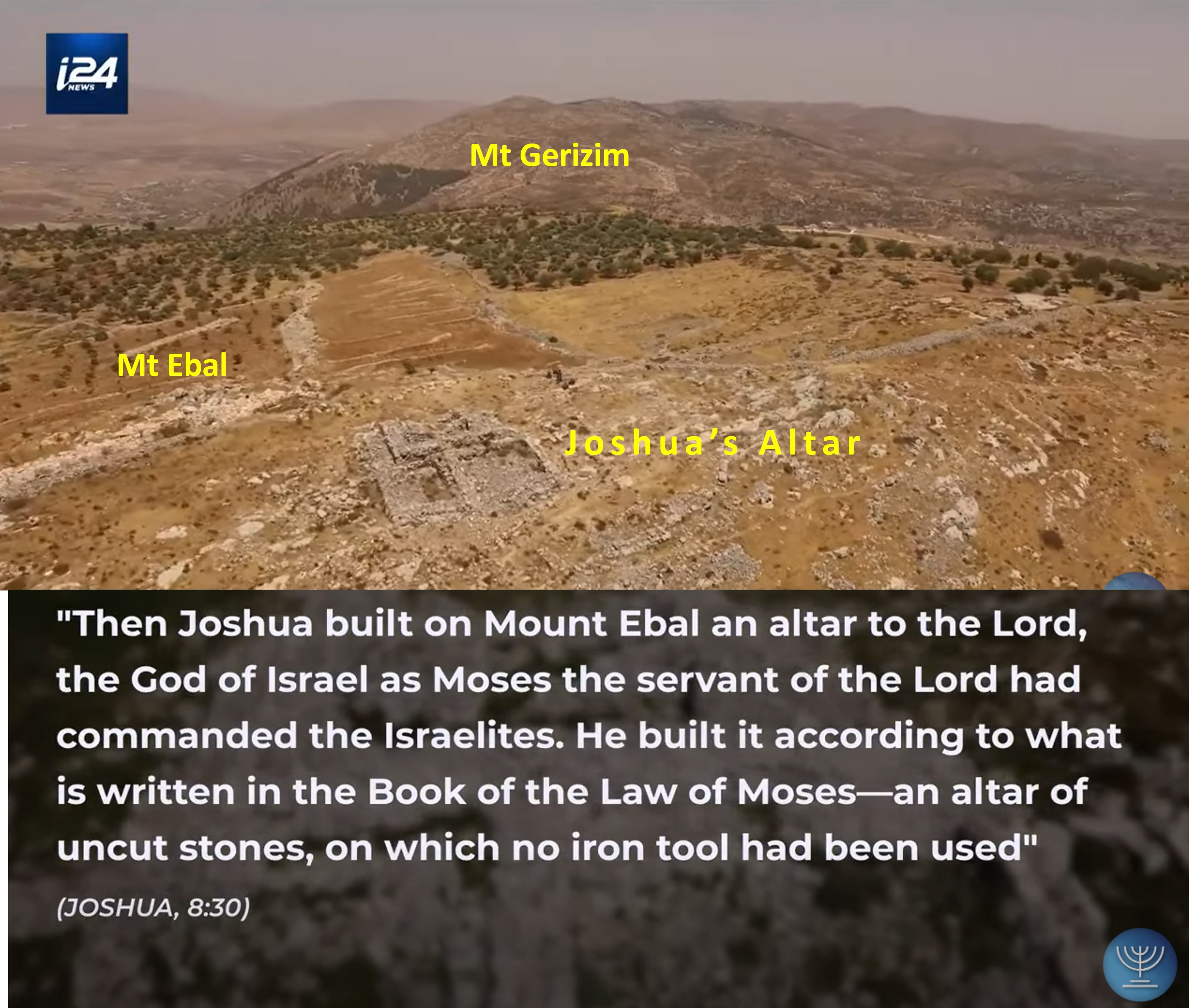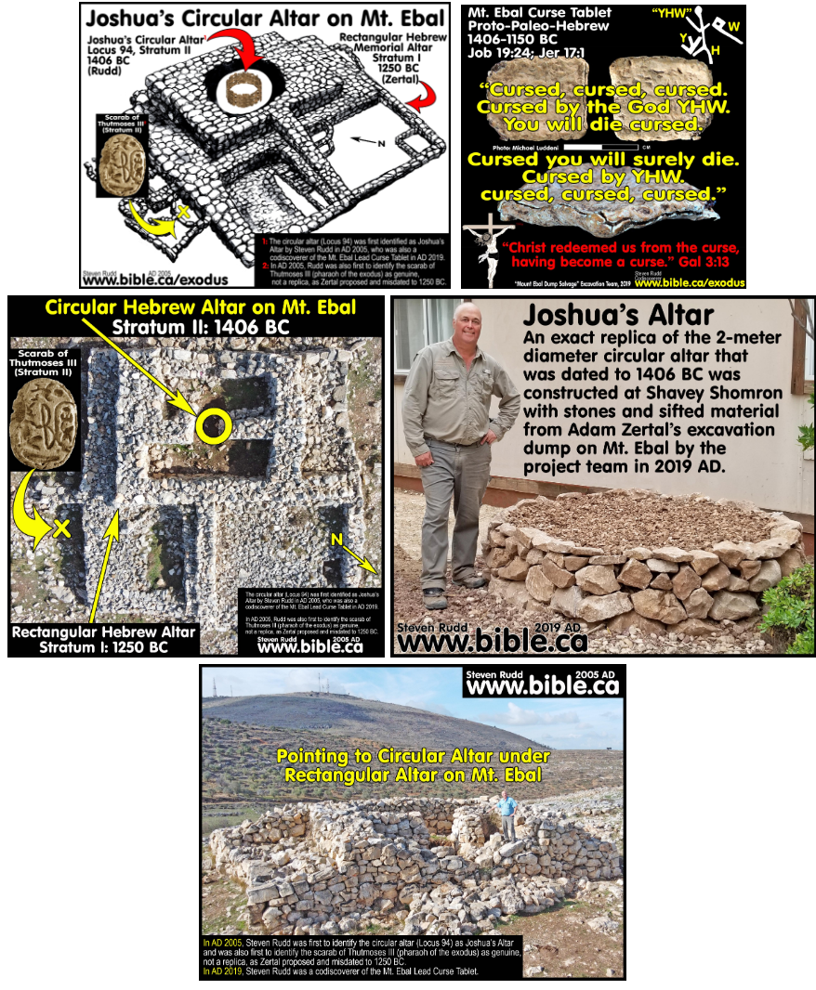Old Testament Sites Testify of the Gathering
Connecting “We as a People”
The Book of Mormon, as a revelation from God, possesses some advantage over the old scripture: it has not been tinctured by the wisdom of man, with here and there an Italic word to supply deficiencies. It was translated by the gift and power of God, by an unlearned man, through the aid of a pair of Interpreters, or spectacles—(known, perhaps, in ancient days as Teraphim, or Urim and Thummim) and while it unfolds the history of the first inhabitants that settled this continent, it, at the same time, brings a oneness to scripture, like the days of the apostles; and opens and explains the prophecies, that a child may understand the meaning of many of them; and shows how the Lord will gather his saints, even the children of Israel, that have been scattered over the face of the earth, more than two thousand years, in these last days, to the place of the name of the Lord of hosts, the mount Zion. The Evening and The Morning Star, 1, no. 8 (January 1833): 58
Russell M. Nelson
“Learn for yourself—right now at your age—how to receive personal revelation. And nothing will make a bigger difference in your life than that!” “Hope of Israel,”
President Russell M. Nelson also declared, “Anytime you do anything that helps anyone—on either side of the veil—take a step toward making covenants with God and receiving their essential baptismal and temple ordinances, you are helping to gather Israel. It is as simple as that” (Russell M. Nelson, “Hope of Israel,
Abraham, Covenant of [Bible Dictionary]
“The portions of the covenant that pertain to personal salvation and eternal increase are renewed with each individual who receives the ordinance of celestial marriage (see D&C 132:29–33). Those of non-Israelite lineage, commonly known as Gentiles, are adopted into the house of Israel and become heirs of the covenant and the seed of Abraham through the ordinances of the gospel (Gal. 3:26–29).
Being an heir to the Abrahamic covenant does not make one a “chosen person” per se but does signify that such are chosen to responsibly carry the gospel to all the peoples of the earth. Abraham’s seed have carried out the missionary activity in all the nations since Abraham’s day. (Matt. 3:9; Abr. 2:9–11.)”
Jacob’s prophecy about Ephraim and Manasseh, the two favorite sons of Joseph and Asenath, as well as the rest of the Tribes of Jacob is found in Genesis 48:21 and Jeremiah 31:10. Although Ephraim and Manasseh were not sons of Jacob like the other tribes of Israel, they were grafted into the Tribes of Jacob-Israel.
“AND ISRAEL SAID UNTO JOSEPH, BEHOLD, I DIE: BUT GOD SHALL BE WITH YOU, AND BRING YOU AGAIN UNTO THE LAND OF YOUR FATHERS.” (GENESIS 48:21)
HEAR THE WORD OF THE LORD, O YE NATIONS, AND DECLARE IT IN THE ISLES AFAR OFF, AND SAY, HE THAT SCATTERED ISRAEL WILL GATHER HIM, AND KEEP HIM, AS A SHEPHERD DOTH HIS FLOCK. (JEREMIAH 31:10)
There must be a regathering and a second Greater Exodus out of Egypt once again as Christ must lead us all home to the promised land. I call it a possible Second Harvest.
Joseph and Joseph
Robert Goodwin
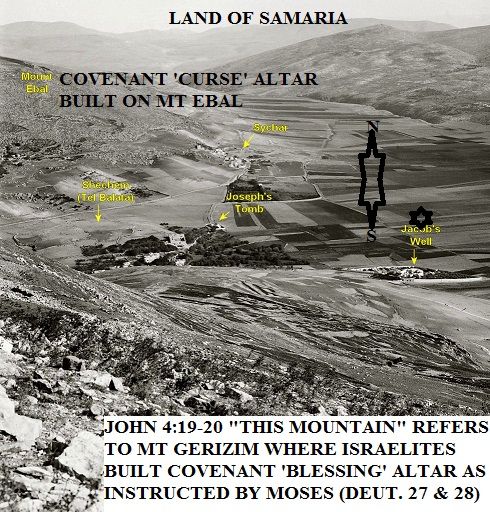 I want to thank ROBERT A GOODWIN ([email protected]) for this information. In the gallery are attached some photos and a brief review of the significance of Mt. Gerizim, Mt. Ebal, Shechem and Sychar, where Jacob’s Well and Joseph’s Tomb are found, which Robert submitted. Read of this historic area in two articles below that Robert shares with us.
I want to thank ROBERT A GOODWIN ([email protected]) for this information. In the gallery are attached some photos and a brief review of the significance of Mt. Gerizim, Mt. Ebal, Shechem and Sychar, where Jacob’s Well and Joseph’s Tomb are found, which Robert submitted. Read of this historic area in two articles below that Robert shares with us.Robert had a very strong impression to get it right with this very appropriate ‘rare photo’ (Rare Photo Left)
The Blessings and Cursing’s are found in Deut. 27 and 28. These were read and shouted across the valley and those on the other mountain would shout back their AMEN. then the next curse or blessing was shouted and the amen repeated after each one.
Shechem (Nablus): Joseph’s Tomb
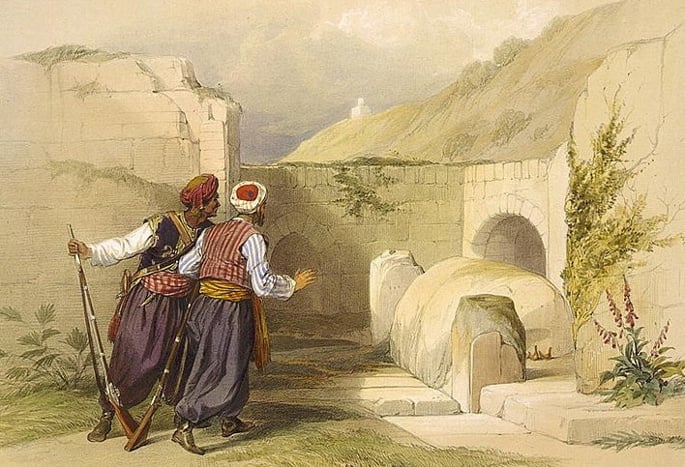
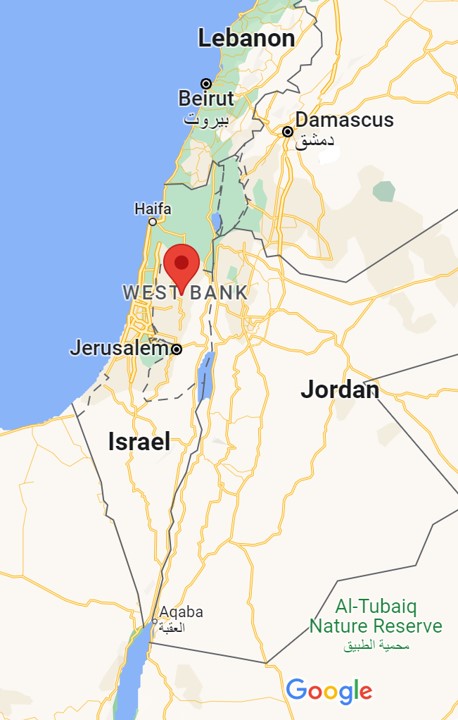 Amidst the mountains of Shomron (Samaria) is a four-thousand year old city named Shechem. (Red Marker Left). Very few biblical locales have as rich a history as this storied city. In fact, when the first Jew arrived in the Holy Land, Shechem was his first stop. In this city, also known as Nablus, lie the remains of Joseph, viceroy of Egypt. In recent times, modern-day Jewish heroes have struggled to maintain a Jewish presence in Shechem and Joseph’s Tomb.
Amidst the mountains of Shomron (Samaria) is a four-thousand year old city named Shechem. (Red Marker Left). Very few biblical locales have as rich a history as this storied city. In fact, when the first Jew arrived in the Holy Land, Shechem was his first stop. In this city, also known as Nablus, lie the remains of Joseph, viceroy of Egypt. In recent times, modern-day Jewish heroes have struggled to maintain a Jewish presence in Shechem and Joseph’s Tomb.
When Abraham first entered the Land in 2023 (1737 BCE), his first stop was the “place of Shechem,” where G‑d appeared to him and promised: “To your descendants I will give this land.” This was the first time that G‑d informed our Patriarch of this ultimate intention.
Two generations later, returning from Charan with his wives and children, Jacob came to Shechem and purchased a piece of land on the perimeter of the town. The prince of the town, also named Shechem, abducted and violated Jacob’s daughter, Dina. Her brothers, Simon and Levi, rescued her and killed all the men of Shechem in retaliation.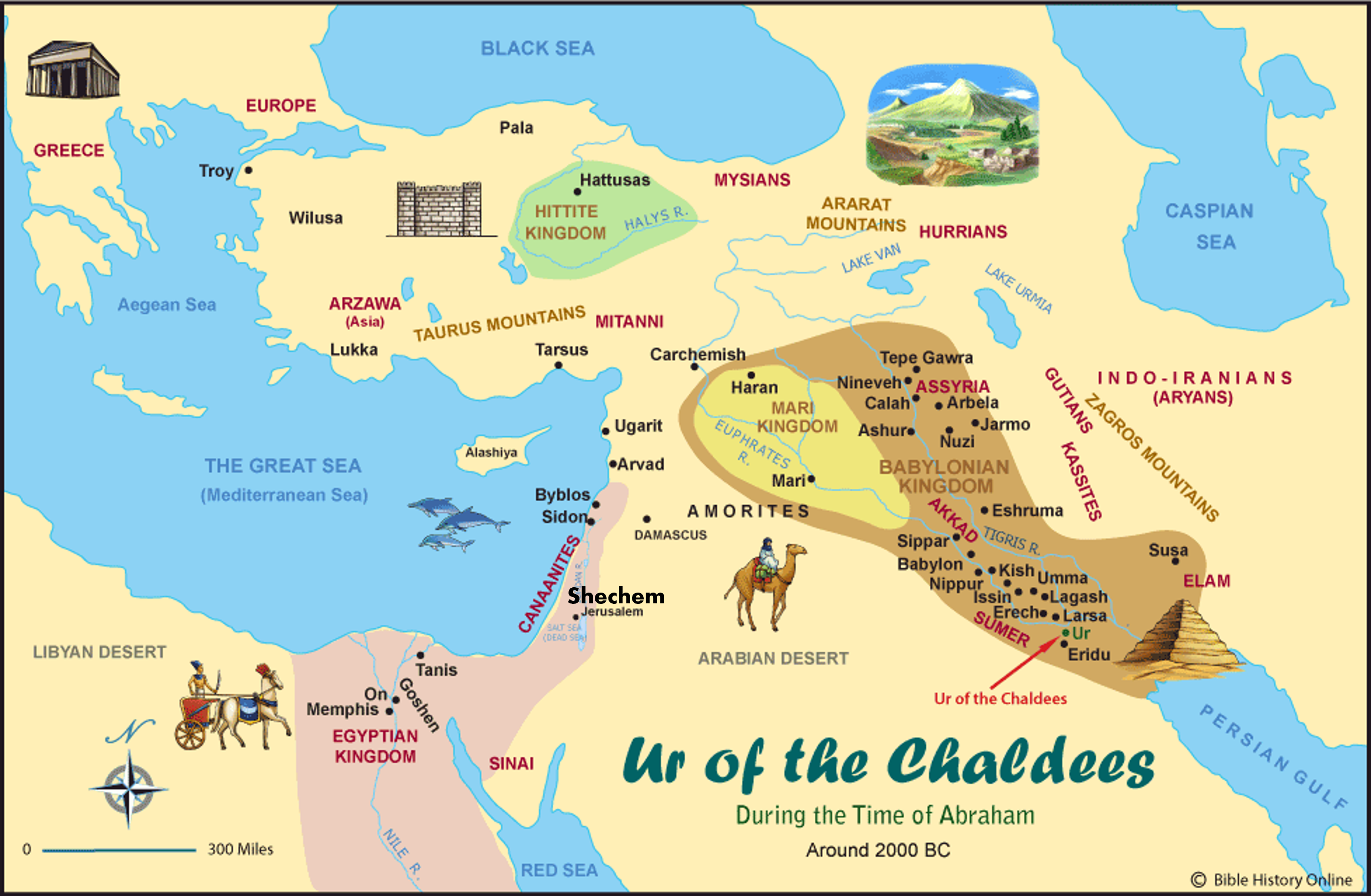
Sixteen years later, Jacob sent 17-year old Joseph to “check on the welfare of his brothers” who were shepherding their father’s herds near Shechem. When Joseph found his brothers, they sold him into slavery, setting off a chain of events that would lead to the Egyptian exile.
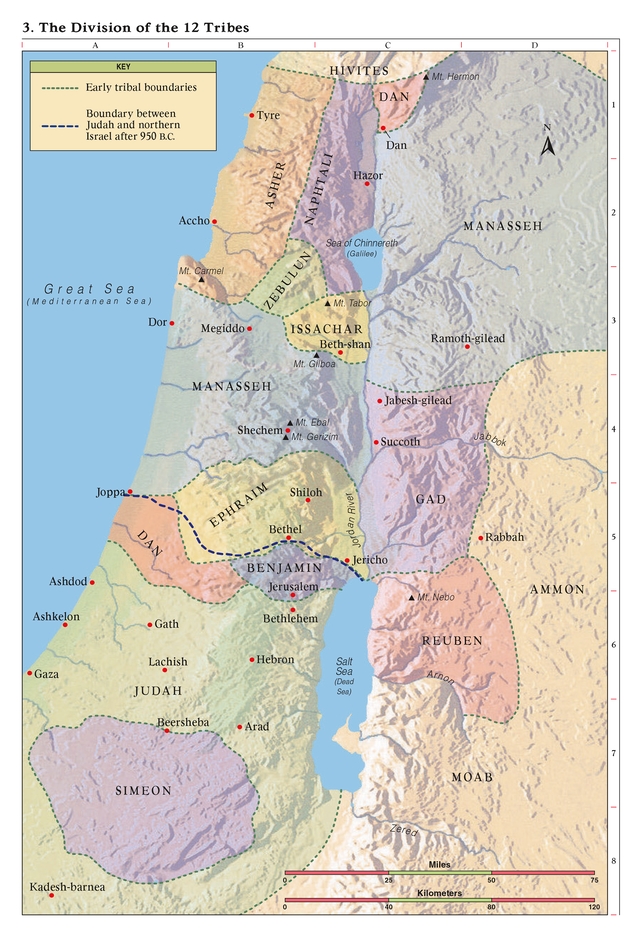 Many years later, when the entire family was already in Egypt, Jacob promised the city of Shechem to Joseph. It would make up part of the territory of Joseph’s son, Ephraim.
Many years later, when the entire family was already in Egypt, Jacob promised the city of Shechem to Joseph. It would make up part of the territory of Joseph’s son, Ephraim.
Following the Exodus from Egypt, Joshua led the nation into the Land of Israel. As soon as they entered the Land, Joshua built an altar on Mount Ebal, one of the two mountains flanking Shechem. (Recently, an archeologist claims to have discovered this altar on Mt. Ebal.)
Half of the nation then stood atop Mount Ebal and the other half atop Mount Gerizim, while the Levites who stood between the mountains shouted the curses they would be subjected to if they disobeyed G‑d the law, and the blessings they would receive if they obeyed.” Golding
Mount Ebal & Gerizim
As Moses was nearing the end of his mortal life, he wanted the Israelites to be able to choose to be blessed instead of cursed. To help the Israelites choose to be blessed, he instructed Joshua to set up a learning experience for Israel.
In Deuteronomy 27 “the Lord gave instructions about what was to happen once the children of Israel entered the promised land. They were to go to Shechem, which was located in a valley between Mount Ebal and Mount Gerizim. (See map above). Moses instructed that half of the tribes of Israel should stand on Mount Gerizim and the other half should stand on Mount Ebal. The Levites were to stand in the valley between the two mountains and recite the actions that would result in blessings and those that would result in curses as designated by God. When actions resulting in curses were recited, as described in Deuteronomy 27:14–26, the tribes on Mount Ebal were to say “amen.” (See Joshua 8:33–35.) Although not specifically stated in the scriptures, it may have been that when the actions resulting in blessings were recited, the tribes on Mount Gerizim responded with “amen” as well.
Deuteronomy 28 further clarifies what the Lord wanted the Israelites to learn from this experience. Read Deuteronomy 28:1 and read Deuteronomy 28:15 What does the Lord say would bring either blessings or curses upon the people?
What did the Lord command the people to do to obtain the blessings and avoid the curses? The Lord said to keep all of His commandments.
Mount Gerizim represented the consequences for obeying God’s commandments and Mount Ebal represented the consequences for disobeying them.
If we choose to obey all of God’s commandments, He will bless us in all areas of our lives. If we choose not to obey all of God’s commandments, we lose the blessings He desires to give us.

Elder Russell M. Nelson of the Quorum of the Twelve Apostles said, “[Have] faith to keep all the commandments of God, knowing that they are given to bless His children and bring them joy [see 2 Nephi 2:25]. [You] will encounter people who pick which commandments they will keep and ignore others that they choose to break. I call this the cafeteria approach to obedience. This practice of picking and choosing will not work. It will lead to misery. To prepare to meet God, one keeps all of His commandments” (“Face the Future with Faith,” Ensign or Liahona, May 2011, 34).
Although keeping all of God’s commandments may seem overwhelming, President Harold B. Lee said, “The most important of all the commandments of God is that one that you are having the most difficulty keeping today. If it is one of dishonesty, if it is one of unchastity, if it is one of falsifying, not telling the truth, today is the day for you to work on that until you have been able to conquer that weakness. … Then you start on the next one that is most difficult for you to keep” (Teachings of Presidents of the Church: Harold B. Lee [2000], 30). Source
Joseph Buried c.1690 BC Source
The Jews then buried Joseph’s remains – which had been carried along from Egypt – in the plot of land which Jacob had bought, and designated Shechem as a City of Refuge and a Levite city.

Before Joshua died, he gathered the nation in Shechem and made a covenant between them and G‑d. He set up a stone in Shechem, and said, “Behold, this stone shall be a witness against us, for it has heard all the words of the Lord which He spoke to us; it shall be a witness against you, lest you deny your G‑d.”
Throughout the period of the Prophets and the Kings, the city of Shechem played a pivotal role. When King Solomon died, the people gathered in Shechem, and it was there that the Ten Tribes seceded from Davidic rule and formed the Northern Kingdom.

Eventually, Shechem also served as a stronghold for the Samaritans, an ethnic group that was transferred to the Holy Land by Sennacherib King of Assyria. Though they officially converted to Judaism, they retained their pagan practices and beliefs, and were consistently a thorn in the Jews’ side. [Remember the Good Samaritan Story]
After the destruction of the Temple, the Romans changed Shechem’s name to “Neapolis” (meaning “new city”); this then became “Nablus.” Nevertheless, although the Jewish nation was dispersed and weakened, there remained a continuous Jewish presence in Shechem, and Joseph’s Tomb stayed a focus of Jewish pilgrimage and prayer.
The late Dr. Zvi Ilan, one of Israel’s foremost archeologists, described Joseph’s Tomb as: “…one of the tombs whose location is known with the utmost degree of certainty and is based on continuous documentation since biblical times.”
Jacob’s Well c.1788 BC Source
“( John 4:5 John 4:6 ). This is one of the few sites in Palestine about which there is no dispute. It was dug by Jacob, and hence its name, in the “parcel of ground” which he purchased from the sons of Hamor ( Genesis 33:19 ). It still exists, but although after copious rains it contains a little water, it is now usually quite dry. It is at the entrance to the valley between Ebal and Gerizim, about 2 miles south-east of Shechem. It is about 9 feet in diameter and about 75 feet in depth, though in ancient times it was no doubt much deeper, probably twice as deep. The digging of such a well must have been a very laborious and costly undertaking.” Source
Jacob’s Well (Arabic: بئر يعقوب, Bir Ya’qub, Greek: Φρέαρ του Ιακώβ, Fréar tou Iakóv, Hebrew: באר יעקב, Be’er Yaaqov; also known as Jacob’s fountain and Well of Sychar) is a deep well constructed from rock that has been associated in religious tradition with Jacob for roughly two millennia. It is situated inside an Eastern Orthodox church and monastery, in Balata village on the outskirts of the Palestinian city of Nablus in the West Bank.
Jewish, Samaritan, Christian, and Muslim traditions all associate the well with Jacob. The well is not specifically named in the Old Testament, but Genesis 33:18–20 states that when Jacob returned to Shechem from Paddan Aram, he camped “before” the city and bought the land on which he pitched his tent and erected an altar.
The present-day church containing the well has been built close to the archaeological site of Tell Balata, which is thought to be the site of biblical Shechem. Some Biblical scholars contend that the plot of land is the same one upon which Jacob’s Well was constructed. Other Biblical scholars have made note of the well discovered in the “open country” of the “land of the Kedemites” in Genesis 29 where Jacob meets his future bride, Rachel.
Jacob’s Well is mentioned by name once in the New Testament in a passage (John 4:5–6) which says that Jesus “came to a city of Samaria called Sychar, near the field which Jacob gave to his son Joseph. Jacob’s well was there.” John’s Gospel goes on to describe a conversation between Jesus and a Samaritan woman (called Photini in Orthodox tradition), which took place while Jesus was resting at the well after a tiring journey.[4] (John 4:7–15) The site is counted as a Christian holy site. From a Christian perspective, the reference in John’s Gospel to the well seems to hint at a deeper nuptial reading of Jesus as the Bridegroom of Israel come to reunite the divided tribes through a spiritual union with him, the long-awaited Messiah; see St. Augustine’s Tractate 15 on the Gospel of John.” Wikipedia
JACOB LEAVES FOR BETHEL JACOB’S FAMILY GIVE UP THEIR IDOLS [GENESIS 35]
1 God told Jacob, “It’s time to move on. Go to Bethel and live there. Build an altar where you can worship the God who appeared to you there when you were on the run from your brother, Esau.”
2 Jacob told his family, “Get rid of all the idols you’ve accumulated. Purify yourselves by washing your bodies and changing into clean clothes.
3 We’re moving to Bethel. I will build an altar where we can worship the God who answered my prayers and came to my rescue when I was in trouble.”
4 The family gave Jacob all their idols along with their earrings. He buried it all under an oak tree near Shechem.
5 As Jacob’s caravan moved from Shechem to Bethel, all the people in the area became terrified of them, so they stayed away.
6 In time, Jacob’s caravan reached Luz, another name for Bethel, in the land of Canaan.
7 Jacob built an altar in worship of God, who had appeared to him there in a dream years ago when he was on the run from his brother. He named the place God of Bethel.
8 It wasn’t long after this that Rebekah’s elderly nurse, Deborah, died. The family buried her under an oak tree in a valley below Bethel. They named the tree Weeping Oak.
9 Now that Jacob was home from the land of Paddan-aram, God appeared to him again at Bethel with another blessing.
10 God said, “Your name is Jacob, but I don’t want anyone calling you that anymore. They should call you Israel. That’s your new name.” So God renamed him Israel.
11 Then God said, “I am God Almighty. Make yourself into a huge family. Your descendants will become not only a great nation, but many nations. Some of your people will become kings, too. 12 I’m also passing onto you and your descendants the land I gave to Abraham and Isaac.” 13 After that, God left.
12 I’m also passing onto you and your descendants the land I gave to Abraham and Isaac.” 13 After that, God left.
14 Jacob set up a large stone to mark the place where God spoke to him. He poured some wine over the rock, as an offering of thanks to God. He poured some olive oil, too, anointing the place as sacred.
15 Jacob named the place Bethel since this is where God spoke to him”
Source: Casual English Bible
Shechem Today
In 1926, the Jewish inhabitants of Shechem were forced to leave in the face of Arab pogroms. A year later, an earthquake destroyed most of the Old City of Shechem, including the Jewish quarter.
With the Six Day War in 1967, Shechem and the surrounding areas reverted to Jewish control; however, while tourism in the area was encouraged, Jews were not permitted to live there.
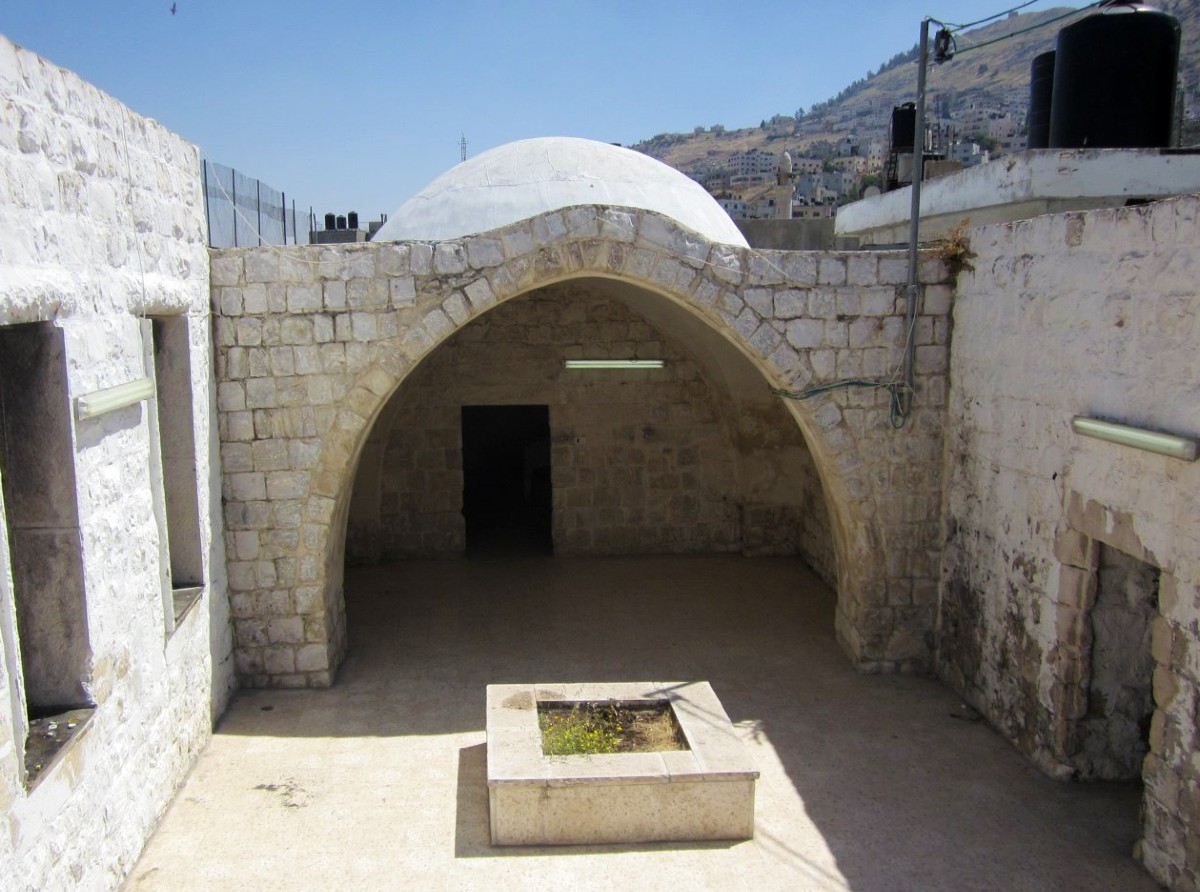
Dedicated activists refused to accept this untenable situation, and as a result of their persistence there are now several established Jewish communities on the mountain ranges surrounding Shechem: Kedumim, Yitzhar, Har Bracha and Elon Moreh. Within Shechem itself, a yeshivah was formed at Joseph’s Tomb in 1982, called “Od Yosef Chai” (“Joseph still lives”—the famous words spoken to Jacob following many years that he presumed Joseph to be dead).
Unfortunately, the situation today is far from ideal. In 1996, Shechem was given over the Palestinian Authority. Joseph’s Tomb was to remain in Jewish hands, but in the early days of the 2000 terrorist offensive, that, too, was given up under fire. The Palestinian Authority promised to prevent damage to the site, but within a few hours a mob broke into the compound and destroyed everything. Furniture and holy books used by the yeshivah [A yeshiva is a place where Jews gather to study Torah and rabbinic traditions. Originally referring to an academy for advanced scholars, today the term also refers to Jewish elementary schools where Judaic studies comprise a significant portion of the curriculum] were burned and the place was reduced to rubble.
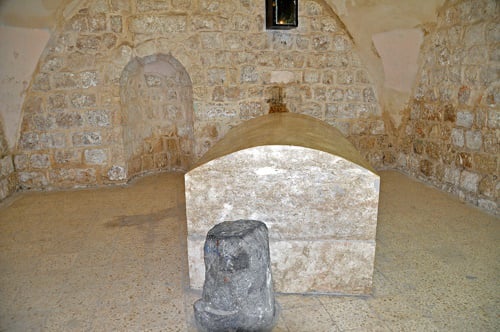
Mark Twain on Shechem
In 1867 Mark Twain visited Shechem. He described this visit in his diary which was later published. The following are some interesting excerpts:
“At two o’clock we stopped to lunch and rest at ancient Shechem, between the historic Mounts of Gerizim and Ebal, where in the old times the books of the law, the curses and the blessings, were read from the heights to the Jewish multitudes below.
“About a mile and a half from Shechem we halted at the base of Mount Ebal before a little square area, enclosed by a high stone wall, neatly whitewashed. Across one end of this enclosure is a tomb . . . It is the tomb of Joseph. No truth is better authenticated than this.
“Few tombs on earth command the veneration of so many races and men of diverse creeds as this of Joseph. Samaritan and Jew, Muslim and Christian alike, revere it, and honor it with their visits. The tomb of Joseph, the dutiful son, the affectionate, forgiving brother, the virtuous man, the wise Prince and ruler. Egypt felt his influence – the world knows his history.”
Regarding the city’s Jewish community he writes:
“For thousands of years this clan have dwelt in Shechem under strict taboo and having little commerce or fellowship with their fellowmen of any religion or nationality. For generations they have not numbered more than one or two hundred, but they still adhere to their ancient faith and maintain their ancient rites and ceremonies. Talk of family and old descent! … This handful of old first families of Shechem…can name their fathers straight back without a flaw for thousands [of years]…. I found myself gazing at any straggling scion of this strange race with a riveted fascination, just as one would stare at a living mastodon or a megatherium…”

Shechem During Old Testament times
Genesis 12:5, 6 – “Abram took Sarai his wife, Lot his brother’s son, all their possessions that they had gathered, and the people whom they had acquired in Haran, and they went to go into the land of Canaan. They entered into the land of Canaan. Abram passed through the land to the place of Shechem, to the oak of Moreh. At that time, Canaanites were in the land.”
“MOREH, OAK OF (Heb. אֵלֹ֣ון מﯴרֶ֑ה; KJV incorrectly: “Plain of Moreh”), mentioned in Genesis 12:6 as a place near Shechem where Abraham camped on arriving in Canaan from Haran. There God revealed Himself to Abraham with the promise to give Canaan to his descendants, whereupon Abraham responded by building his first altar to the Lord in Canaan. The name “Oak” or “Terebinth of Moreh,” may also be tr. “the teacher’s” or “the Diviners’ Oak.” It must have been a “holy” tree, and the place an old Canaanite sanctuary. Although it is difficult to understand Abraham’s motives for visiting this place, there is no reason to suggest that Abraham recognized the sacred character of the place, and willfully adapted himself to it. The reference to the Oak of Moreh merely serves to indicate the place where Abraham camped, and built his own altar.” Bibliography D. Baly, The Geography of the Bible, (1957); J. Simons, Geographical and Topographical Texts of the Old Testament (1959).
Map of Shechem (Old Testament)
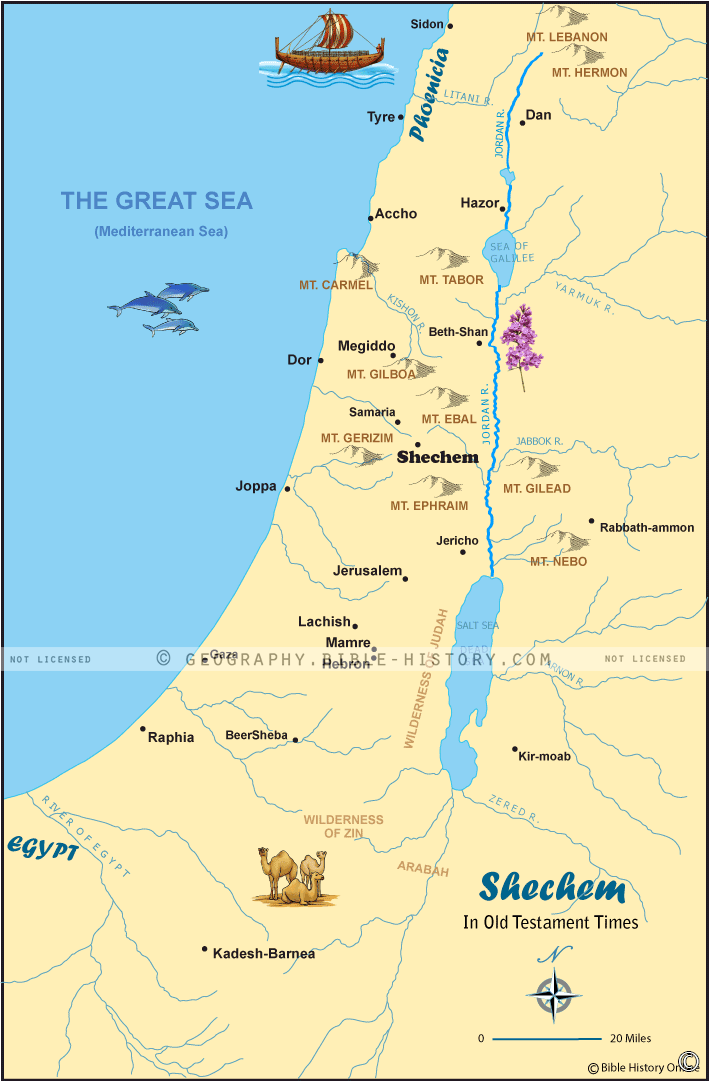 The Location of Shechem
The Location of Shechem
Abraham and Shechem
When Abraham made his journey to the promised land, the land of Canaan, he came to Shechem and the LORD appeared to him saying “I will give this land to your offspring,” so Abraham built an altar to the LORD under the Terebinth Oak tree of Moreh at Shechem. The Bible says that at that time the “Canaanite was then in the land.”
Jacob and Shechem
Abraham’s grandson Jacob also came to Shechem and build a well there, known in the Bible as Jacob’s Well. When he returned from Paddan-Aram in Mesopotamia and re-entered the land of Canaan he arrived at Shechem (Gen 33:18 and Gen 34). The Bible says that Shechem was a Hivite city and Hamor was chief. Jacob purchased a parcel of a field which contained the well that he had dug there. Later Joseph was buried there (Josh 24:32).
Shechem in Israel’s History
When the land of Canaan was conquered and divided among the Israelites, Shechem was allotted to Ephraim, and finally assigned to the Levites as a city of refuge. It was here at Shechem that Joshua gave his final words before his death (Josh 24). This was of course the place where the blessings and curses were uttered from Mount Gerizim (Blessings), and Mount Ebal (Curses) Josh 8:33-35. Later the judge Gideon’s son Abimelech convinced the Shechemites to revolt and elect him as king (Judges 9:1). Later he destroyed the city and sowed it with salt. Later when Solomon had died all of Israel had assembled at Shechem and his son Rehoboam was made king. It was also here at Shechem that the 10 tribes of Israel rebelled and turned from the House of David to follow Jeroboam (1 Kings 12:16). Shechem was made capital of the northen kingdom of Israel. Later in the New Testament Shechem is mentioned as the place (Sychar) where Jesus met the woman at the well. (John 4).
Genesis 12:9-10 – “And Abram journeyed, going on still toward the south. And there was a famine in the land: and Abram went down into Egypt to sojourn there; for the famine was grievous in the land.” Shechem – Bible History (bible-history.com)
Joshua’s Altar c.1406 BC
by Valerie Steimle [email protected]

